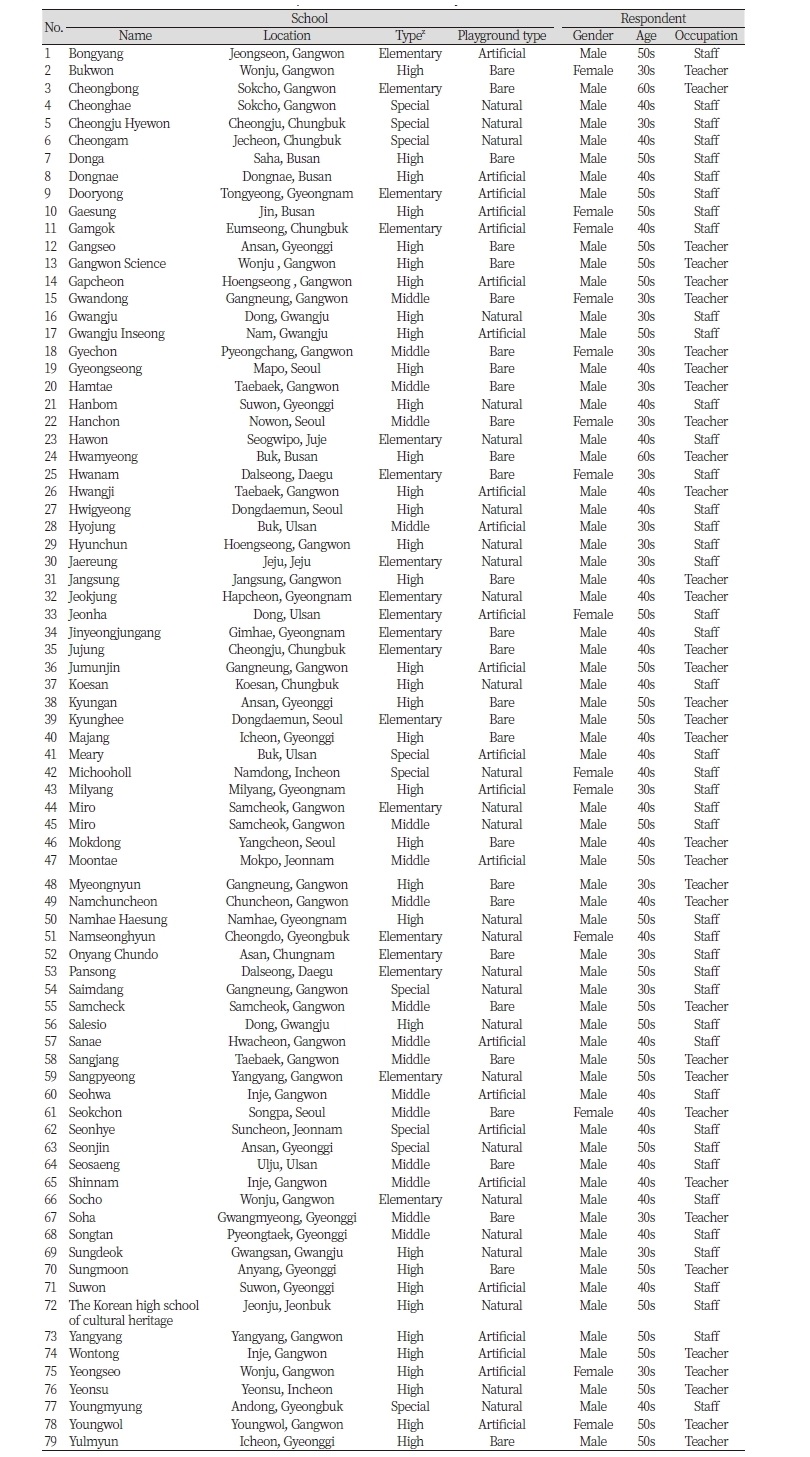Abstract
There are three types (natural grass, artificial turf, and bare playgrounds) of school playgrounds in Korea. Knowing the thoughts of perception of students, teachers and staff, and student parent on the school playgrounds can be very important. However, no research has been done on the subject. This study is based on questionnaires received from 79 schools (27 natural grass, 23 artificial turf, and 29 bare playground schools) of 390 elementary, middle, and high schools where one of three types of playground is installed. The satisfaction of students, teachers and staff, and student parent according to the three types of school playground was in the order of natural grass>artificial turf>bare playground. Teachers and staff answered student safety (83.8%) and nature-friendly environment (90.9%), respectively, as the greatest advantages of a natural grass playground. They expressed different opinions by saying that the biggest disadvantage of natural grass playgrounds are limited use (71.1%) and difficult management (63.6%), respectively. Teachers and staff also answered that the most important advantage of artificial turf playground are available facilities throughout the year, but the biggest disadvantages are high injury risk (71.1%) and environmental hazard (72.7%). They responded with the greatest strength and weakness of the bare playground as the sympathy with nature and use restrictions during the rainy season. Assuming that they would set up a playground at their next workplace, the playground type they wanted to select was in the order of natural grass>artificial turf>bare playground. They answered that difficulty of playground management, student safety, and environmental risk are important as selection criteria.
Figures & Tables



